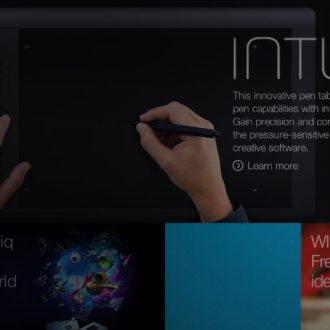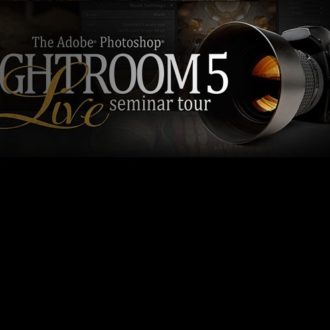Why Are There Three Different Places To Sharpen In Lightroom?
I get asked this question pretty regularly so I thought I’d start this week off with a quick look at why there are three different places, and three different types (and ways) to sharpen inside of Lightroom.
CAPTURE SHARPENING:
Above: Capture Sharpening is the sharpening that is designed to bring back the original sharpness of the image (sharpness that’s lost through  the act of capturing the image to a sensor, and converting it to digital, and all that stuff). To add some “Capture Sharpening” to your image, you go to the Develop Module, to the Detail panel, and you’ll see a Sharpening section (shown in red above).
If you shoot in JPEG mode on your camera, you’ll see the Sharpening “Amount” slider here in Lightroom is set to “0” (zero) because your camera already adds capture sharpening to your image in-camera. If you shoot in RAW, you’ll see that the Sharpening Amount slider is set to 25 for RAW images by default, so it’s already adding a little capture sharpening to make up for the fact that your image is the “RAW” untouched image out of the camera with no sharpening applied in-camera at all.
What I do:
If I’m not going to Photoshop at all with this image (I’m going to start and finish totally in Lightroom), then I usually increase the amount a bit higher than 25. It just seems too subtle to me. So, how high do I drag it? I pains me to say it this way, but it “depends on the image.” If the image is the type that loves sharpening (something with lots of detail, like a car, a sports shot, a landscape, etc.) then I crank it up quite a bit. If the subject its something of a softer nature, I go easy on it. However, I don’t crank it up too much because I know I’m going to add at least one if not two more sharpenings (if that’s even a word) to the image before I’m done. OK, so that’s Capture Sharpening.
LOCAL SHARPENING:
Above: Local Sharping is where you “paint” sharpening over one or more parts of your image (using the Adjustment Brush in the Develop Module) to make those areas looks extra sharp or have those areas stand out. Having just these small parts of the image stand out, can make the overall image appear much sharper without any of the “bad things” (halos, artifacts, color-shifts, etc.) that come with over-sharpening the entire image. Â In the example shown above, I painted over the back of the couch that’s right at the bottom foreground of the image. I also painted over the two red chairs and the chandelier to help draw the eye (things that are sharper draw the attention of our eyes).
What I do:
This is totally optional sharpening, and I only use it if I have a photo that I think could benefit from it. For example, imagine a tight shot of a football player’s helmet. I might take the Adjustment Brush; crank up the Sharpness slider quite a bit; then paint over just the metal fasteners, or the face guard or the logo on the front of the helmet to make just those areas really pop. Even though it takes just a few seconds to do this, it makes the overall image appear much sharper. Again, this is a totally optional step, so don’t feel like you have to do this — but if you see an area that you wish was sharper, this can help.
OUTPUT SHARPENING:
This third type of sharpening is applied when you’re completely done with your image and you’re either going to: (a) export the image outside of Lightroom as a JPEG or TIFF or PSD, or (b) you’re going to make a print of the image from right within Lightroom itself (rather than jumping over to Photoshop to print it there). This output sharpening doesn’t come into play if you’re just taking the image over to Photoshop.
Above: We’ll start with Exporting: When you’re exporting your image out of Lightroom as a JPEG, TIFF, or PSD, in the Export window that appears you’ll have the “Option” of using Output Sharpening, and what’s nice about this particular sharpening is that Lightroom does all the math. All you have to do is tell it if the image you’re exporting is going to be seen on screen (so, it’s headed for your Web site, or flickr, or Facebook, etc.), or if you’re actually going to make a print. There’s a pop-up menu where you tell Lightroom whether it’s for Screen viewing, or you tell Lightroom it’s for ‘print’ by choosing either Matte or Glossy as your paper choice. Then lastly, you get to choose how much sharpening you want: a small amount, the regular amount, or a lot (high). When you do that, it looks at all these choices you just made and it automatically chooses the proper amount of sharpening, based on your choices. How cool is that!
What I do:
I do choose whether it’s going to screen or print, but then I use the “High” setting for everything — no matter where its going. I just do. I wish I had a more exciting and intricate answer, but truthfully that’s what I do. I think the Output Sharpening set to Low is way too subtle. It should be named “off.” I think Standard should be named “Low” and High should be named “Medium.” But, that’s just me — you have to try all three settings and see what you think.
Above: Here’s the Print dialog box, and down in the Print Job panel you can see the same Output Sharpening settings that you just saw in the Export dialog. I use it the same way, with the same settings as I mentioned above.Â
OK folks, that’s a sharp way to kick off our week (groan. That was a bad one, I know).
Best,
-Scott
P.S. I know that at some point over the past three or four years, Matt has probably covered this exact topic. Maybe numerous times. If you already know this, or think it’s “Lightroom 101” or whatever, just remember that there are a LOT of folks here that are brand new to the site, along with a lot of Lightroom beginners as well. If I cover something that’s already been covered, that is bound to happen — especially for a blog that’s been around for years. So, if you’re advanced in Lightroom, or already knew the topic, or read it last year, there’s really no need to post a comment to let me know that. I’m trying to share techniques and tips based on questions I get about Lightroom during my live tour, via email, from Twitter (FB, Google+); from friends, and from your questions in the survey I posted a few weeks ago (thanks again to everyone who posted. It was a huge help). Some of the tips will be beginner, some intermediate and some more advanced, and I’ll strive to do something for everybody whenever possible. Thanks again for your support these past few weeks, and for all the kind words and encouragement. It means a lot.Â






